DEVELOPMENT OF INFORMATION AND COMPUTER SYSTEM FOR ASSESSMENT OF THERMOPHYSICAL AND ENVIRONMENTAL INDICATORS IN COMBUSTION OF VARIOUS TYPES OF FUEL
DEVELOPMENT OF INFORMATION AND COMPUTER SYSTEM FOR ASSESSMENT OF THERMOPHYSICAL AND ENVIRONMENTAL INDICATORS IN COMBUSTION OF VARIOUS TYPES OF FUEL
Abstract
Assessment of qualitative and quantitative structure of emissions in atmospheric air at combustion of fuel is one of priority ecological tasks. Emissions of pollutants in combustion products directly depends on initial component composition of fuel and its heatphysical characteristics.
This article is devoted to the description of the information system (EVS) developed by authors in the popular Python programming language allowing to realize calculation of dependence of an exit of volatiles in atmospheric air and also their heatphysical characteristics from composition of fuel. This system allows to count the specified indicators as under real conditions of combustion of fuel, and to predict results, at estimated basic data on fuel. The main method of development of EVS is application of functions of the module of heatphysical calculations of CoolProp and also the settlement techniques specified in the article.
1. Introduction
The use of each type of hydrocarbon fuel in all cases should be economically profitable and environmentally sound, while the reliability of the functioning of energy and industry in real conditions, including extreme ones, should be ensured on the basis of a differentiated approach to the use of a particular type of fuel.
The efficiency of the combustion process of any type of hydrocarbon fuel is determined mainly by the quantitative characteristics of the combustible mixture being prepared, reflecting the uniformity of the fuel structure, the dispersion of hydrocarbon molecules, the uniformity of mixing fuel and air, the homogeneity of the mixture supplied for combustion, and the optimal concentration of the components involved in the combustion reaction. These characteristics, in turn, depend on the method of preparation and the scheme for supplying fuel and oxidant to the combustion zone. The main thermotechnical characteristics of power fuels are elementary composition, value of combustion heat, excess air coefficient and volatile substances output , .
Modern automation systems or manual control of the fuel combustion mode are primarily based on complete fuel combustion. To compare the thermal value of different types of fuel, the concept of conventional fuel is used - this value is used when summing up various fuel resources, comparing specific fuel consumption and performing technical and economic calculations, the material balance of combustion, the primary purpose of which is to determine the theoretical volume of air required for complete combustion of fuel, as well as the theoretical volume of combustion products.
The quantitative and qualitative characteristics of emissions during fuel combustion depend on the type of fuel, its composition and combustion methods, and the gaseous products produced contain products of complete oxidation of combustible elements SO2, SO2, N2O and NOx air nitrogen. Based on the results of the fuel balance and calculated aerodynamic values, draft-draft equipment is selected.
This article is devoted to the description of the information and computer system developed by the authors in the popular Python programming language, which allows you to calculate the dependence of the release of volatile substances into the atmosphere, as well as their thermophysical characteristics on the composition of fuel.
2. Research methods and principles
The environmental component of the efficiency of using a particular type of hydrocarbon fuel depends mainly on its storage conditions, the level of fuel preparation technology and the quality of the combustion process.
Poor mixing of fuel and oxidizer, uneven distribution of air in the combustion volume, uneven local combustion temperatures cause intensive formation of not only nitrogen oxides NOX=NO+NO2+NO3 and carbon COX, but also methane CH4, hydrogen sulfide H2S, soot C, pyrolysis products CXHY, as well as molecular oxygen O2, which are released into the atmosphere as part of flue gases .
Combustion of fuels having different molecular structures, molecules of different structures and heterogeneous types of hydrocarbon compounds always requires excess air. In the end, the excess air leads to an increase in the temperature difference in the local combustion zones, to chemical and mechanical burns and, as a result, to fuel overspend .
The purpose of the described work was to develop a methodology for creating an automated program for calculating quantitative and qualitative characteristics of emissions into the atmosphere during the combustion of various gaseous fuels, depending on the thermophysical characteristics of fuel and units.
As an example, gaseous fuels were chosen:
- traditional fuel – natural gas;
- coal produced by gasification – converter gas;
- two types of gaseous fuels widely used in metallurgy – coke and blast furnace;
- promising type of fuel – hydrogen gas.
Gaseous fuel is a simple mechanical mixture of combustible and non-combustible gases. The fuel may include carbon monoxide CO, hydrogen H2, methane CH4, heavy hydrocarbons CmHn, and sometimes hydrogen sulfide H2S. The non-combustible portion may include oxygen O2, nitrogen N2 and carbon dioxide CO2. The composition of gaseous fuel, in addition, includes impurities - water vapors, resins, dust, etc. , .
The described work pursued the following tasks , :
1. Creation of software product for determination of composition and thermophysical properties of combustion products of different types of fuel.
2. Assessment of the quantitative and qualitative indicator of emissions of pollutants emitted into the air.
3. Algorithm for dependence of volatile substances output on thermophysical characteristics.
As an example, the dependence of CO, NOx, O2, H2O on the excess air ratio of gaseous fuels was calculated.
To create the program, it was decided to use the freely distributed and most currently used Python programming language for organizing various calculations, including technological ones. For this language, there are all means of visualizing calculations, and most importantly, the necessary CoolProp library, which allows you to determine the properties of a large number of substances at different parameters, including gases included in the studied fuels , , , , as well as replenish the database with real values, passport data of the equipment used or reference. For example, to accurately determine the excess air ratio, it is necessary to measure the almost complete composition of combustion products, namely: concentrations of oxygen, nitrogen, carbon monoxide, hydrogen, methane.
To obtain the composition and thermophysical properties of combustion products, only gaseous fuels in the program can be used up to 122 different components, for this they must be added to the algorithm (the program interface is shown in Figure 1).
Work with this programming language is well mastered by the author and a large number of applied studies have already been carried out, most of which relate to the energy industry.
Initially, the initial fuel composition and other parameters such as the excess air ratio range are set, the combustion reaction is calculated, and thus the composition of the combustion products can be determined.
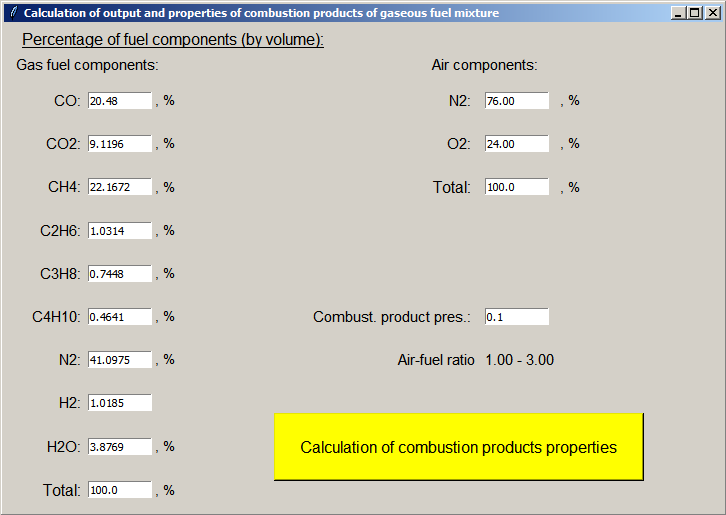
Figure 1 - Composition and thermophysical properties calculator interface
- Using the Tkinter library for Python, a program interface is formed, consisting of a working field, a header, explanatory labels, and data entry fields.
- Setting the percentage ratio of the fuel mixture (at the beginning of the calculation, the equality of the sum of 100% is checked).
- Setting the percentage ratio of air components by volume (at the beginning of the calculation, the equality of the sum of 100% is checked).
- Setting the range of thermophysical characteristics (in this case, the excess air coefficient), for which the program calculates the combustion reaction in the cycle. After that, the following parameters are calculated programmatically: lower heat of combustion, density of the fuel mixture, air density, theoretical and real air consumption for combustion, the amount of each combustion product.
- Volumetric and mass composition of combustion products is determined.
- This calculation procedure corresponds to the fuel combustion process calculation method set forth in books
, .3. Main results
Using the Matplotlib function library for Python, the result graphs presented in Figures 2-6 are automatically built, the results of calculating the dependence of the volume content of CO, NOx, O2, H2O on the excess air coefficient of various gaseous fuels are shown, the program interface allows you to clearly display this dependence.
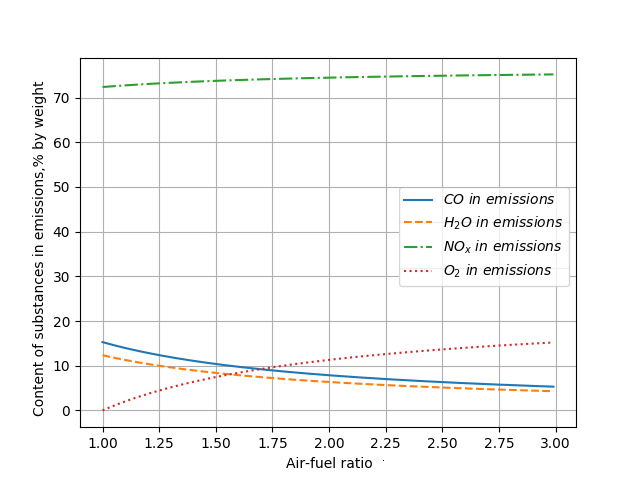
Figure 2 - Results of calculation of pollutant emissions dependence on excess air ratio
Note: natural gas
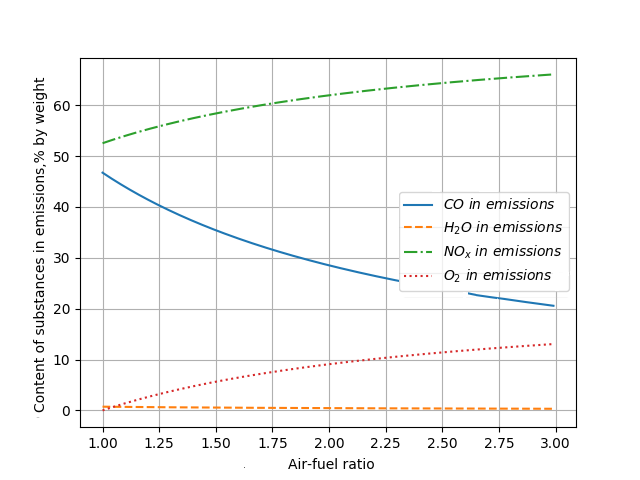
Figure 3 - Results of calculation of pollutant emissions dependence on excess air coefficient
Note: converter gas
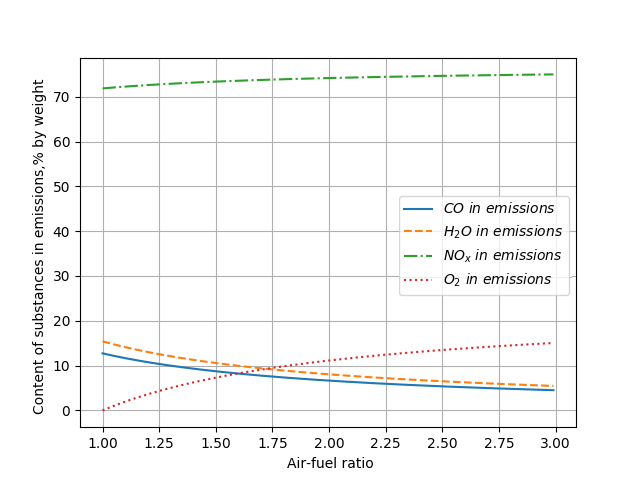
Figure 4 - Results of calculation of pollutant emissions dependence on excess air coefficient
Note: coke gas
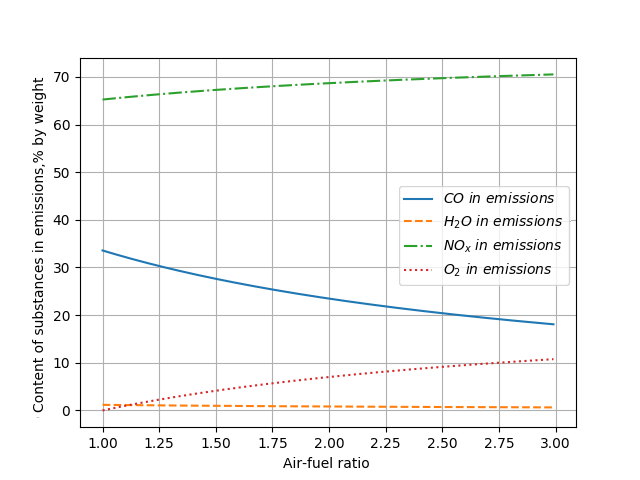
Figure 5 - Results of calculation of pollutant emissions dependence on excess air ratio
Note: blast furnace gas
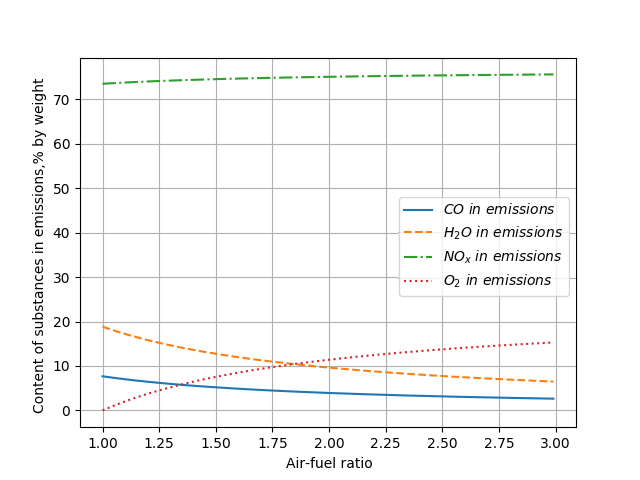
Figure 6 - Results of calculation of pollutant emissions dependence on excess air coefficient
Note: hydrogen fuel
4. Discussion
Currently, when using hydrogen fuel, a mixture of hydrogen and methane is used to reduce explosion hazard. The content of NOx in nitrogen oxide emissions remains significant, but of all the results presented, the CO carbon dioxide content is the lowest.
The source of the formation of nitrogen oxides during the combustion of various types of fuel, as a rule, is the nitrogen-containing components of the fuel itself, the presence of air in the combustion zone and the increase in the oxygen concentration at the outlet.
When burning natural gas, measures are needed that would reduce the formation of thermal nitrogen oxides. For example, in order to reduce the emission of nitrogen oxides, the optimum excess air ratio in the active combustion zone must be kept at the lowest possible level so as not to contribute to the oxidation of nitrogen, on the other hand, a decrease in the excess air ratio leads to an excessive increase in the concentration of carbon monoxide and other products of chemical underburn in the flue gases.
The creation of an automated program for calculating quantitative and qualitative characteristics of emissions into the atmosphere during the combustion of various gaseous fuels, depending on the thermophysical characteristics of fuel and units, will simplify the solution of practical problems in this area.
5. Conclusion
The Python methods and program created during this study will simplify calculations when choosing the optimal thermophysical characteristics when burning fuel, assess the release of volatile substances into the atmosphere, and also predict the composition of emissions with known initial data.
The developed software module can be used by both design engineers and students of engineering specialties to simplify the calculation procedure, and it is also planned to include it in the complex developed by the authors to determine the modes and characteristics of operation of power equipment.
